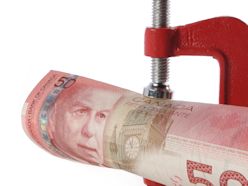
The next federal budget — possibly delivered next month – will likely see the current annual TFSA contribution limit increased to between $10,000 and $11,000.
But the Canadian Centre for Policy Alternatives (CCPA) has called for a lifetime cap of $36,500 in its 20th annual alternative federal budget, released Thursday.
The left-leaning, Ottawa-based think tank says imposing the TFSA lifetime limit would result in $100 million in annual savings for Ottawa’s coffers.
Read: Raising TFSA limit not as good as it sounds
CCPA senior economist David Macdonald tells Advisor.ca that most lower-income Canadians won’t be able to afford to maximize higher contribution limits, and that the extra room would only benefit wealthier Canadians — a point the Office of the Parliamentary Budget Officer made last month. The PBO said the program’s benefits are skewed to “higher income, higher wealth and older households.”
MacDonald, who helped write the CCPA’s alternative federal budget (AFB), says 40% of Canadians can’t afford to take full advantage of the tax breaks offered in either TFSAs or RRSPs. Regarding the latter, the AFB would set an annual $20,000 limit for RRSP contributions, which currently rise every year and are capped at $24,930 for 2015.
The $20,000 cap affects those with annual incomes of $110,000 or more, which the CCPA says would result $1.1 billion in increased tax revenue annually.
Read: What’s in store for Budget 2015?
The AFB would save the federal government a further $1.1 billion annually by cancelling pension income splitting, “which disproportionately rewards high-income families and creates fiscal disincentives for women to retain independent […] pension income.”
Gone too would be family income splitting (another $2 billion in annual savings) and the stock-option deduction that allows CEOs and executives to pay tax on their compensation at “half the rate the rest of us pay on our employment income,” resulting in $610 million in additional annual savings.
The AFB also sets out to tackle another tax loophole — the capital gains deduction, which allows individuals and corporations to pay half the regular income tax rate on capital investment income, and which the CCPA says costs the federal government more than $9 billion every year.
The AFB would tax income from capital at the same rate as employment income after adjusting for inflation, but would not touch other existing capital-gains exemptions, such as for principal residences or small business.
Read: Claim the capital gains exemption
Canada’s alternative budget also looked south for inspiration on increasing government revenue.
Our top federal rate for taxable income over $138,586 is 29%. That’s below the top federal rate in the United States, where it’s nearly 40%. So, the CCPA proposes to increase the top income tax rate here to 35% on incomes over $250,000. That change would result in an estimated $3 billion in additional federal revenue.
Another $2 billion could be recouped by introducing a wealth or inheritance tax. The AFB would introduce a minimum inheritance tax of 45% on estates worth more than $5 million, much like the U.S. estate tax.
Read: Shield insurance proceeds from U.S. estate tax
The CCPA says these and other measures would save $34.5 billion for 2015-16 and lift 893,000 Canadians out of poverty. The AFB shifts the focus away from the “federal government’s continued obsession with austerity and balancing the budget.”
Macdonald says that given falling crude prices, the federal government will likely report a small deficit of about $17 million rather than the $1.6-billion surplus the federal government projected late last year.
But the AFB says that by “balancing its own books through service cuts in order to pay down its own debt,” the federal government has ignored other actors in the Canadian economy — most notably family households, which, since 2008-09, “have taken on much more stimulative debt than any level of government.” Macdonald says household debt is now equivalent to 95% of Canadian GDP.